Learning to write a professional email and create client proposals is a skill every freelancer must master from the start.
Without the skill of proper communication, you will never be able to land high-paying clients or build long-term relationships with them. It’s as simple as that.
To help you get started, I’ll share a few important tips on how to write a professional email and a client proposal as well as how to properly communicate with clients while working on projects.
Let’s get started.
How Proper Communication Help Win Clients
You might think that anyone can write an email and there’s nothing there to learn. Well, you’ll be surprised if you see how some people, who call themselves professionals, write emails.
Here’s an example.
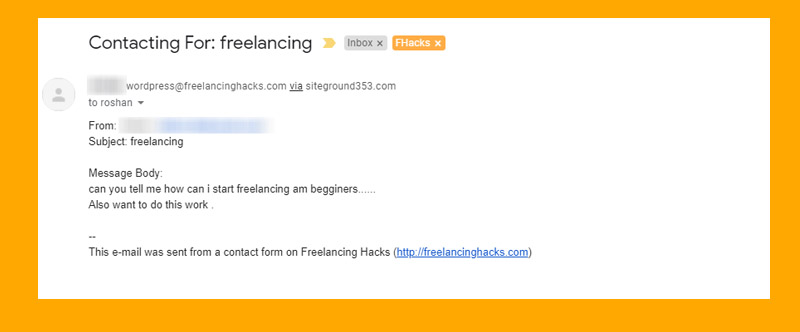
I get this type of emails a lot. I understand that they are just starting out and seeking help, but how can I help someone when they don’t even know how to write a proper email?
In my book, I talk about this topic extensively where I shared a quote from a client who’s been hiring freelancers for many years. His advice is pure gold.

I can tell you from experience that communication plays a key role in building strong and lasting relationships with clients. You can ask from 2 of the clients that I’ve been working with for more than 3 years.
Basic Email Writing Tips
These are some of the tips that I personally use when contacting clients and talking to my clients while working on projects.
PS: I also recommend you to check out the Master Email Writing class on Skillshare. You get 14 days for free on Skillshare so you’ll be able to watch the course for free.
1. Start By Learning The Basics Of English
You can’t write an email if you have poor writing skills. I can’t stress this enough but most freelancers fail to grasp the importance of learning even the basics of English writing.
For example, this person contacted me on Facebook making a request. Take a closer look.
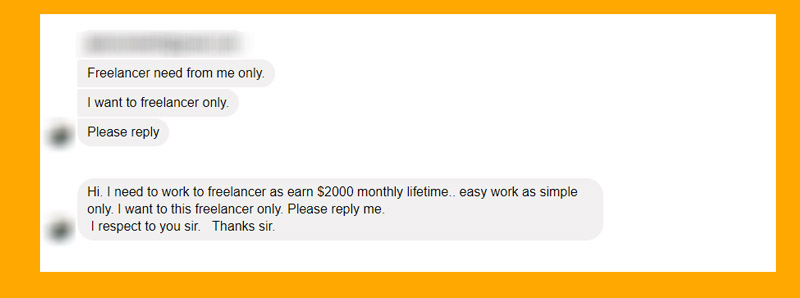
Now tell me, is this the right way to asking for help? Would you reply to an email that looked like this? Imagine if you write an email like this to a client to ask for a job?
If you have poor English writing skills, that’s okay. It’s nothing to be embarrassed about. Even some native English speakers are terrible at writing emails.
But, you can always learn to improve your writing skills. So before you rush into freelancing, invest some time to learn proper English.
There are plenty of great English copywriting courses on Udemy. But, for starters, you can take this course on edX. You can enroll and audit the course content for completely free.
2. Use Power Words In The Subject Line
Power words or action words are types of words that have a strong influence and attract attention. These words also help build trust and authority as well.
For example, think about the many times you’ve turned your head around when you see the words “Save” or “Discount” in a local store.
You can use similar action words to grab the attention of your clients. Including one or two of these power words in your email subject line will increase the chances of clients opening your email.
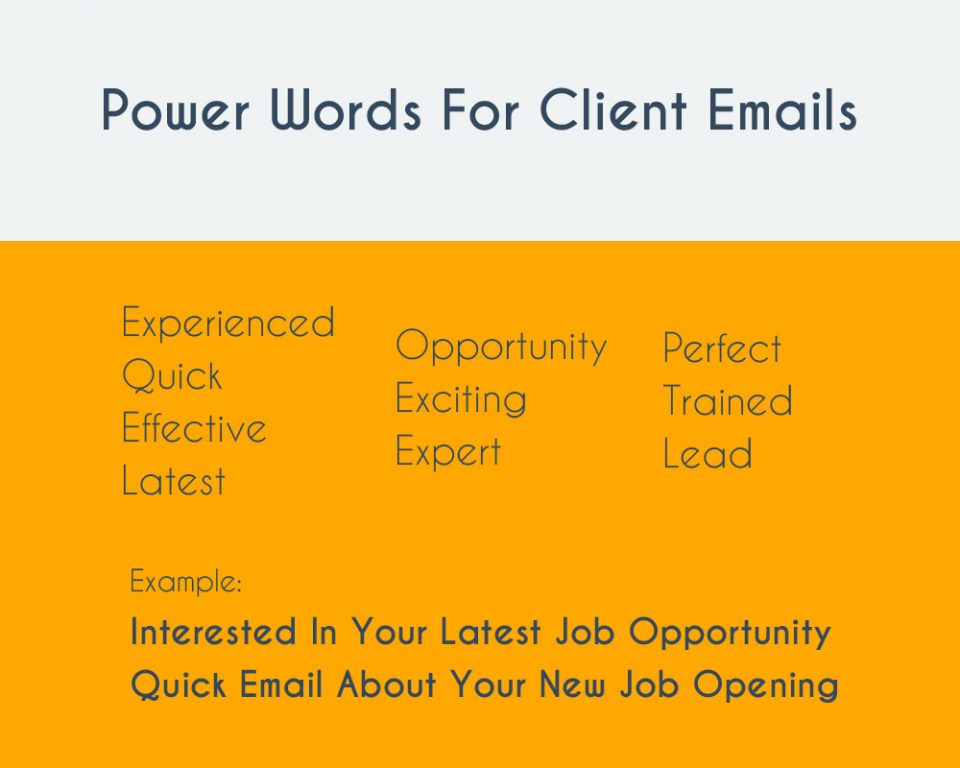
Check out this infographic for more great power words. Just remember not to overuse these words.
You can also test your subject lines using an online tool to check its effectiveness. The free Email Subject Line Tester by Omnisend is a great tool you can use for that task.
3. Address Clients By Their Name
In most countries, people are used to addressing their employers with respectful terms like “sir” or “madam”. This doesn’t apply to freelancers.
Freelancers are independent contractors. You should be treated as equal to your client. It doesn’t matter if your client is the CEO of Microsoft, you don’t have to call him “Sir”.
In fact, most clients and employers in western countries prefer not to be called as “sir” or “madam”. Instead, you can use their first or last name.
“A person’s name is to that person, the sweetest and most important sound in any language” – Dale Carnegie
If you can’t find their name, simply use a general greeting like “good morning” or use the company name like “Hello, Microsoft”.
4. Sum Up Your Email In The First Sentence
Tim Ferriss, the best selling author, uses a clever technique when contacting busy professionals. He writes the first sentence of his emails like this:
“I know you’re really busy and that you get a lot of emails, so this will only take sixty seconds to read.”
Clients are busy people. Chances are they have an inbox filled with 500 emails to go through. So why not make it easier for them to read your email and make their decision.
Tim’s technique is great but a better way for a freelancer to apply that technique is sum up the purpose of your email in the first sentence. Like this:
“I’m a freelance writer with 6+ years of experience, writing this email to apply for your copywriting position”
5. Explain Your Message With Simple Words
Writing an email to a client is often considered as a formal letter. However, most freelancers make the mistake of making it too formal by using technical writing styles and adding big dictionary words.
As Albert Einstein once said, “If you can’t explain it simply, you don’t understand it well enough.” So use simple words and explain your message as you normally would. You don’t have to prove anything to your client. They’ll judge you based on your skills and experience.
But, don’t make your emails too casual. Don’t be that overly confident guy that addresses clients like their best friend.
6. Use Clean Formatting
Emails are displayed differently on mobile and desktop devices. If you write an email using a phone without using line and paragraph breaks, it will show up very differently on a laptop.
Use clean and clear formatting in your emails to make it easier for the clients to read without confusions. It will also show off professionalism as well.
To see how to format an ordinary email, see the examples in my email templates guide.
7. Remember To Use Closing Remarks
When ending your email end it with a closing remark. This last sentence can greatly help you to get a response from your clients and avoid having to wait days for a reply.
For example, you can add a closing remark like “please let me know what you think” or “I’d greatly appreciate it if you could send me a reply in the next 7 days”
This not only adds more character and class to your email or proposal but also encourages the client to take action as well.
8. Double Check Your Email For Errors
Once your email copy is ready, read it once to see if there any spelling errors. Read it again to get rid of any unnecessary terms and words. Read it once more, just to make sure it’s flawless.
It only takes a small grammatical error for the clients to dismiss you as an amateur.
Use a tool like Grammarly to easily check for grammar and spelling errors.
9. Include An Email Signature
While it’s not required, adding an email signature can help improve the overall look of your email and make you come across as an experienced professional to your clients.
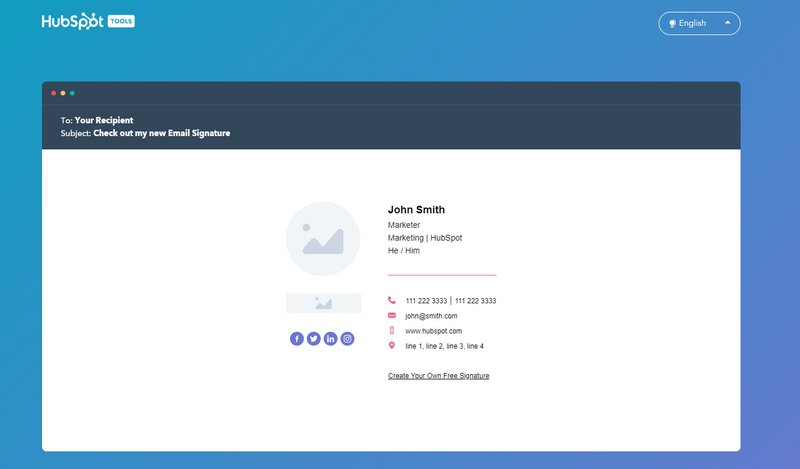
You can use a free email signature generator to create a stylish signature and embed it in your emails.
10. More Important, Be Human!
Sometimes, the best way to show true interest in a job or to connect with a client is to step out of your “professional zone” and just be human in your emails.
For example, occasionally making an appropriate joke, including a thumbs up emoji, or closing an email by wishing the client to “have a great day” will go a long way to show the clients there’s a human being at the other end.
Tips For Writing A Follow-Up Email
When you send an email or a proposal, most clients don’t reply right away. Don’t take it personally, they’re probably too busy or your email might have gotten lost in a busy inbox.
Follow up with a second email when that happens. Here are a few tips for writing follow-up emails.
- Wait 2-3 Days: Clients usually reply to emails within 24-hours. So don’t send follow-ups in that time period. Wait at least 2 days to send your first follow-up.
- Remind What You’re Referring To: Don’t repeat your entire email for the second time in your follow-up. Instead, write a summary telling them what the follow-up is about and ask them to check your previous email.
- Avoid The Cliches: Try to avoid cliches like “I know you’re busy” or “Did you read my previous email”. Keep it professional and stick to the point.
- Send The Third Follow-Up: If you didn’t receive a response to your follow-up after 2 or 3 days, then try one last time.I get these third follow-up emails a lot and whenever someone says it’s the last email, I always reply back.
Tips For Talking To Clients Everyday
Once you land a job and start working with clients, you’ll have to exchange emails and messages with clients and team members quite often. In such occasions, use these tips to communicate better.
- Greet The Client With Each Email: In every email or reply you write to the client, always greet them by their name (eg: “Hi John”)
- Stay Positive: You might be having personal problems or feeling stressed out, but you shouldn’t share your personal issues with your client. Try to stay positive in your messages no matter what.
- Ask For Feedback: Whenever you deliver a job or complete a part of the project, ask for feedback from your client (eg “please let me know if this needs improvement”)
- Learn To Process Criticism: When clients give you feedback and criticize your work, take it like a professional. Instead of making excuses, say “Thanks, John I’ll have those issues fixed right away”.
- Create Different Email Threads: Sometimes your email threads will get pretty long. This makes it confusing to find and refer to past emails. So make different threads for different conversations.
In Conclusion
Unlike other skills that require lots of practice, learning to write a proper email is a basic skill that requires less time and practice. Email a couple of your friends if you want to test it out.
Or, better yet, send me an example email and I’ll give you constructive criticism on how to improve. Use the contact page to reach me.
Once you learn how to write emails, the next step is creating project proposals. Read my guide to learn how to create project proposals that win clients.

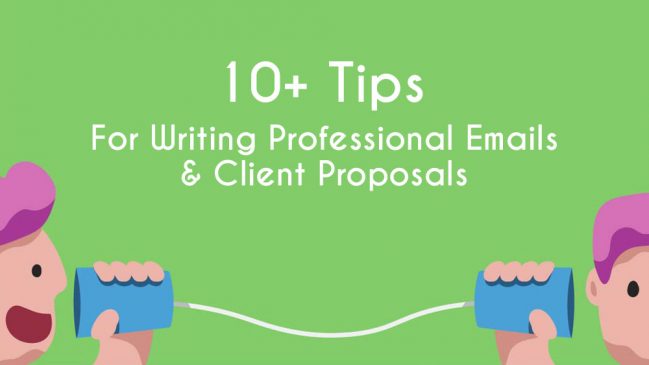
Hey Roshan,
Very clear and really great tips that we all could use to win clients as freelancers.
Keep it up.
Thank you, Nirodha. Appreciate your feedback 🙂
Hey Roshan, thank you for the tips. I got them just when I needed them!
Hi Roshan, can you suggest the
best web for newbie freelancer start freelancing?
Hey Roshan, thanks a lot for the tips, because it’s helping me reform how I write emails for clients.